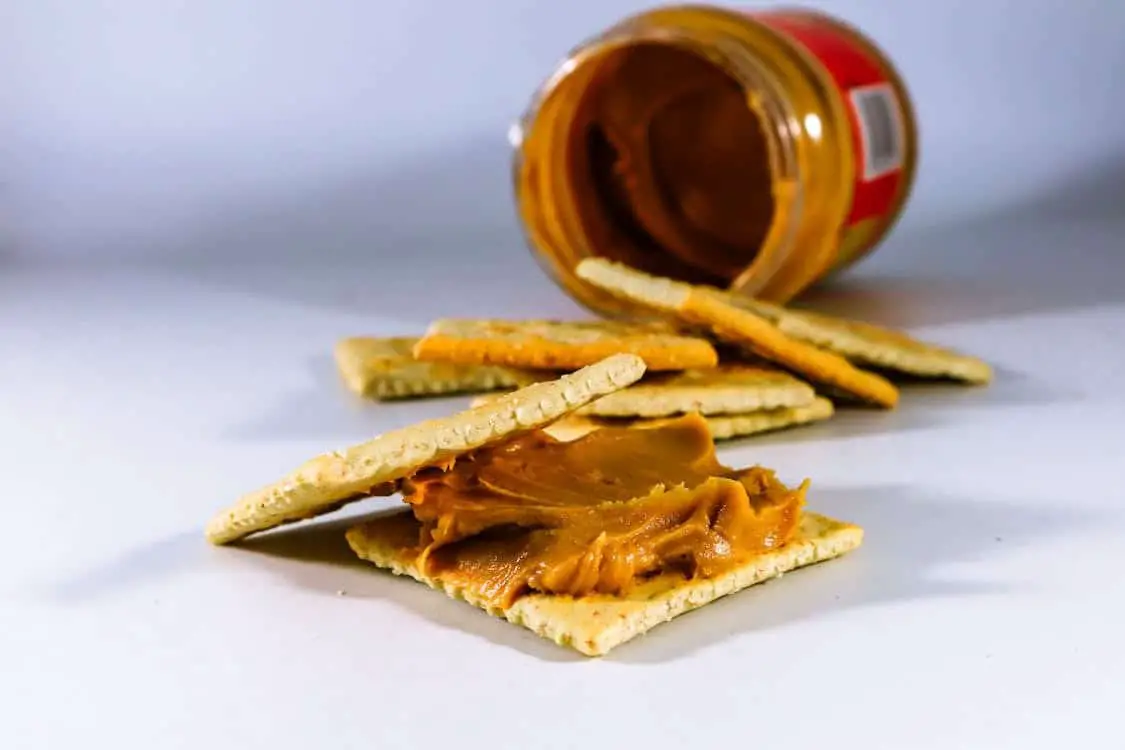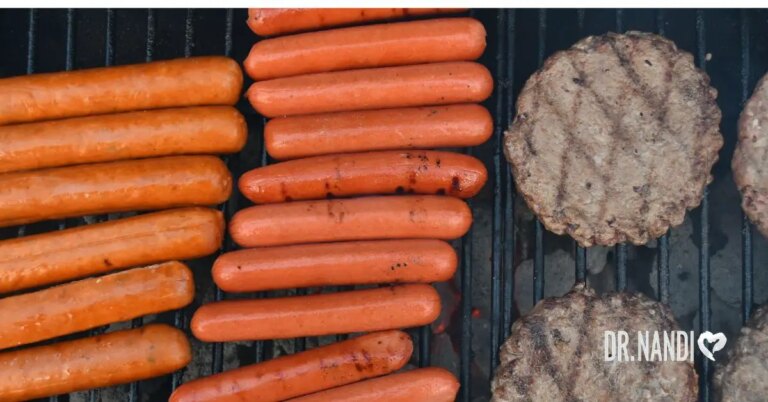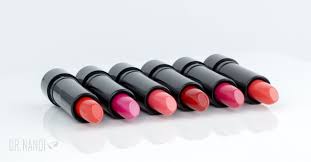Peanut butter. A creamy, indulgent spread that’s found its way into the hearts and pantries of millions worldwide. It’s a comfort food, a quick snack, and for many, a nostalgic reminder of childhood. But behind its velvety texture and rich, nutty flavor lies a story not often told. This familiar kitchen staple, it turns out, has hidden layers that many of us are unaware of.
In this revealing article, we’re peeling back the label on your jar of peanut butter to uncover what’s really inside. We’ll delve into the surprising and often overlooked aspects of conventional peanut butter production, including the addition of not-so-healthy ingredients and the potential health risks they pose.
But fear not, peanut butter lovers! This journey through the jar isn’t just about the pitfalls. We’re also here to guide you through healthier, more sustainable choices and alternatives. Get ready to explore the world of peanut butter like never before, and discover how this beloved spread can fit into a health-conscious, eco-friendly lifestyle.
The Unseen Ingredients in Store-Bought Peanut Butter
When we scoop out a spoonful of peanut butter, we’re often thinking about its creamy texture and nutty taste. However, many store-bought brands pack more than just peanuts in their jars. Here’s what you might also be consuming:
- Hydrogenated Oils: Often added to maintain a stable texture, these oils are a source of trans fats, known for their adverse effects on heart health.
- Added Sugars and Salt: To enhance flavor, many brands include significant amounts of sugar and salt, contributing to increased risks of health issues like diabetes and hypertension.
- Soy and Corn Syrup: Common additives in processed foods, these ingredients are frequently genetically modified and can pose various health risks.
- The GMO Factor: Genetically modified organisms (GMOs) are a controversial topic in the world of food production. In peanut butter, GMOs may be present in additives like corn syrup or soy. These genetically altered ingredients are designed for higher yield and pest resistance but come with their own set of concerns, including potential environmental impacts and health risks.
Understanding the ingredient list of your peanut butter is key to making healthier choices. Look for jars with minimal, straightforward ingredients – ideally, just peanuts and perhaps a touch of salt.
Peanuts: A Crop Under Chemical Siege
Peanuts, despite their popularity, are one of the most chemically treated crops in agriculture. This extensive use of pesticides and fungicides raises significant health and environmental concerns:
- Heavy Pesticide Use: Peanuts are often grown using a variety of pesticides. These chemicals can linger on the peanuts and potentially make their way into the peanut butter we consume.
- The Glyphosate Factor: Glyphosate, a common herbicide, is frequently used in peanut farming. Linked to serious health issues like kidney disease and certain cancers, its presence in our food chain is a growing concern.
Allergies and Toxins: A Troubling Connection
The increasing prevalence of peanut allergies, especially in the United States, is alarming. One theory suggests that the high toxic load from pesticides might be a contributing factor.
Moreover, peanuts are susceptible to contamination by aflatoxins, toxic compounds produced by certain molds. These toxins pose serious health risks, including liver damage and increased cancer risk.

The Production Process: What Happens Before the Jar
The journey from peanut plant to peanut butter involves several steps that can affect the final product’s quality and healthfulness:
- Roasting and Blanching: After harvesting, peanuts are typically roasted and blanched, processes that can affect their nutritional profile.
- Additives for Flavor and Texture: Conventional peanut butter often contains additives to enhance flavor, texture, and shelf life. These can include unhealthy ingredients like hydrogenated oils and excess salt.
Nutritional Aspects of Peanuts and Peanut Butter
Peanuts, a common ingredient in many diets, are more than just a tasty snack. Here, we delve into the nutritional content of peanuts and peanut butter, highlighting both their health benefits and the potential risks associated with their consumption.
Understanding Omega-6 Fatty Acids in Peanuts
Peanuts are a significant source of omega-6 fatty acids, essential for various bodily functions including brain health and development. However, the balance of omega-6 to omega-3 fatty acids in our diet is crucial for maintaining health.
The ideal dietary ratio is around 3:1, but peanuts’ high omega-6 content can tip this balance, leading to potential inflammatory issues, particularly in Western diets where omega-3 intake is often insufficient.
The Aflatoxin Concern
Another aspect to consider is the presence of aflatoxins in peanuts. These toxic compounds, produced by certain fungi, can contaminate peanuts, posing serious health risks such as liver diseases and increased risk of liver cancer over time.
This concern is heightened due to peanuts’ susceptibility to such fungal infections, especially under improper storage conditions.
The Antinutrients in Peanuts
Peanuts also contain antinutrients like lectins and phytic acid. Lectins, serving as a natural defense mechanism for plants, can be harmful when consumed in large amounts by humans.
They have the potential to damage the gut lining, leading to conditions like leaky gut syndrome. This compromised gut health can be a precursor to various health issues, including autoimmune disorders and digestive problems like IBS and Crohn’s disease.
Phytic acid, on the other hand, binds with essential minerals in peanuts, such as iron, calcium, magnesium, and zinc, inhibiting their absorption by the body. As a result, the nutritional value of these minerals in peanuts is somewhat reduced.
Selecting Healthier Peanut Butter Options
Choosing the right peanut butter can make a significant difference to your health. Here are some recommended brands and their specific offerings:
- Justin’s: Offers classic and honey-flavored organic peanut butters, known for their variety in nut butters.
- Santa Cruz Organic: Produces both creamy and crunchy versions of organic peanut butter.
- 365 Everyday Value: Whole Foods Market’s in-house brand offering organic peanut butter in creamy and crunchy varieties.
- Teddie Organics: Popular in the northeastern U.S., this brand provides creamy and chunky organic peanut butter.
- MaraNatha: Known for a range of organic nut butters, including both creamy and crunchy peanut butter.
- Artisana Organics: Specializes in raw nut butters, offering a raw, organic peanut butter.
- Spread The Love: Produces an unsalted and unsweetened organic peanut butter.

Exploring Other Nut and Seed Butter Alternatives
If you’re looking to diversify beyond peanut butter, here are some nutritious alternatives:
- Almond Butter: Rich in monounsaturated fats, vitamin E, and magnesium, made from roasted almonds.
- Cashew Butter: Creamy and slightly sweet, a good source of healthy fats, vitamins, and minerals.
- Sunflower Seed Butter: A nut-free option made from roasted sunflower seeds, rich in vitamin E, magnesium, and selenium.
- Tahini: Derived from ground sesame seeds, tahini is a staple in Middle Eastern cuisine, offering healthy fats, protein, and calcium.
My Personal RX on Smarter Snacking
As a doctor, I recognize the allure of peanut butter – its creamy texture and rich flavor make it a popular choice. However, while it has its benefits, there are healthier alternatives that offer greater nutritional value and fewer health risks, especially for those with allergies or sensitivities. Exploring these alternatives can open up a new world of flavors and health benefits.
- Explore Nut Butter Varieties: Try almond, cashew, or sunflower seed butter for a change in flavor and additional health benefits.
- Choose Natural Over Processed: Look for natural peanut butter options with no added sugars or oils for a healthier choice.
- Boost Heart Health: Integrate Omega-3 Fish Oil supplements into your diet. They’re not just for meals; they can support your health even as you snack.
- Discover Healthier Snacks: Get inspired with the Super Snacks e-book, packed with delicious and healthy snack ideas that go beyond the usual peanut butter options.
- Incorporate Fresh Fruits: Enjoy peanut butter in moderation by pairing it with fruits like apples or bananas for a fiber-rich, nutritious snack.
- Mind the Portions: Peanut butter is calorie-dense. Keep an eye on portion sizes to maintain a balanced diet.
- Stay Informed on Ingredients: Whether it’s peanut butter or any other snack, always read the label to avoid unnecessary additives and preservatives.
By making informed choices and exploring healthier options, snacking can become a delightful and nutritious part of your day.












 Subscribe to Ask Dr. Nandi YouTube Channel
Subscribe to Ask Dr. Nandi YouTube Channel










